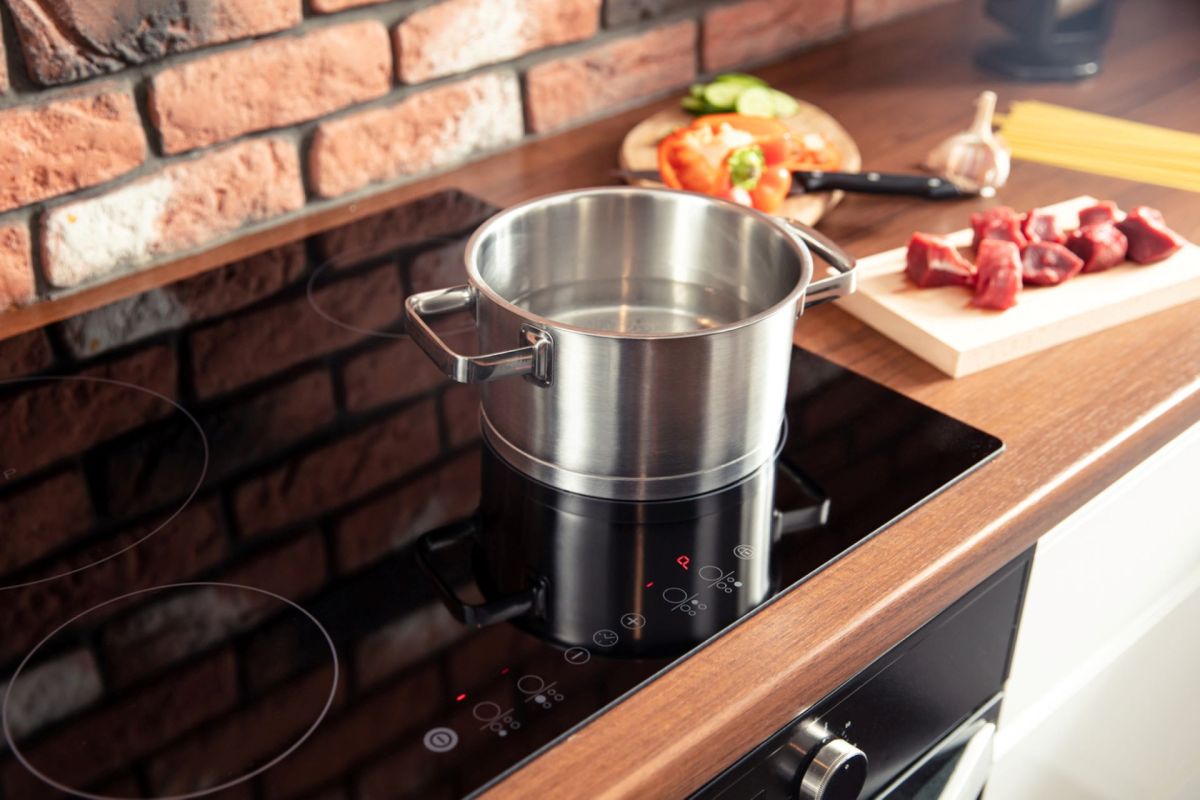The modern home gets most of its power from electricity — but stovetops are often the exception.
Many homes have a gas hookup just for the stove, which comes with fuel expenses and health risks. If you want to eliminate your reliance on gas while also upgrading your cooking experience, then you may want to consider an induction stove.
What is an induction stove?
Induction stoves are unlike any other kind of cooktop because they don't heat the surface of the stove directly. Instead, they create a magnetic field that only reacts with specific pots and pans.
The pans heat up, but anything else you put in the same spot without the right cookware metals — like your hand or a dish towel — shouldn't. (Still, the stovetop does heat up a bit during cooking, and it's unwise to place your hand on any potentially hot surface, so use caution all the same.)
Induction stoves save a lot of energy compared to traditional heating methods, making them cheap to operate, and the lack of hot burners is also great from a safety perspective.
🗣️ When you're buying a kitchen appliance, which of these factors is most important to you?
🔘 Price 💰
🔘 Safety 🦺
🔘 Effectiveness ⚡
🔘 Style and appearance 💎
🗳️ Click your choice to see results and speak your mind
They even work faster than traditional stovetops! Since they don't use gas, they don't produce air pollution inside your kitchen, either — and even after accounting for the extra electricity being used, you'll still reduce over 200 pounds of total air pollution in 10 years.
Plus, these systems can come as a small, portable cooktop, or as a full-sized, built-in appliance to replace your current setup — all depending on what you need.
How much does an induction stove cost?
A full-size induction range is an investment, coming in at an average of $2,500. However, energy savings and a possible Inflation Reduction Act tax rebate (up to $840) for this eco-friendly installation can make up for the cost.
If you want the benefits without the upfront expenses, a single-burner unit, such as the Duxtop portable induction cooktop, costs less than $85 and can sit on your kitchen counter instead of being installed into it.
Is it hard to learn to cook with an induction range?
There are a few differences, which you'll quickly get used to.
First, there's no flame to look at to judge the stove's temperature, so you'll have to look at the controls to see how high they're set.
Second, induction stoves are better than gas when it comes to simmering dishes on low heat. They also cool down more quickly when you turn the power off, so you'll need to keep that in mind when finishing some dishes. But overall, they're easy to use, and you'll adjust in no time.
Some of our favorite induction stoves
For full-size induction stoves, you can find a range of options from multiple trusted brands, including the Samsung 30" Induction Range, which Consumer Reports declared one of the best models of 2024 and usually sells for under $1,500. GE also makes a great 30" option that normally retails for just a bit more. On the higher end, Smeg offers a popular model that usually retails closer to $5,000.
If you're looking for a larger 36-inch option, check out these selections from Bosch, Smeg, and Fisher & Paykel. Check The Cool Down's full guide on induction stoves and cooktops here, where you can also find more about the aforementioned countertop induction cooktops, which cost as little as $60.
Join our free newsletter for easy tips to save more, waste less, and help yourself while helping the planet.









